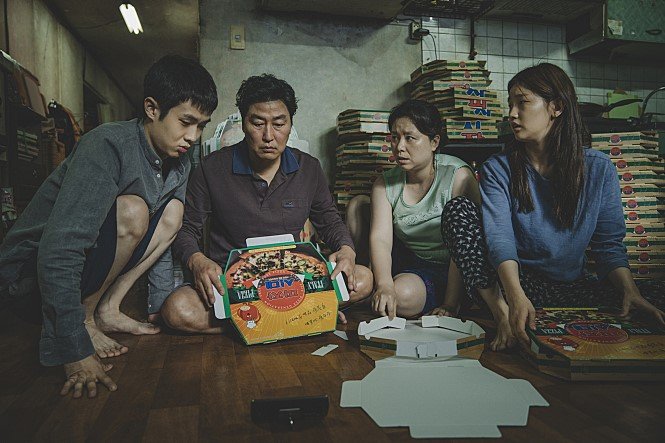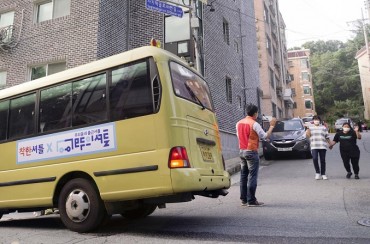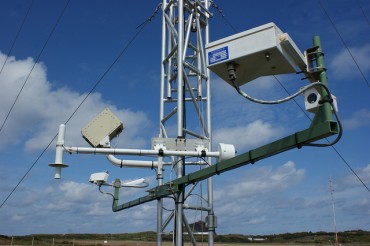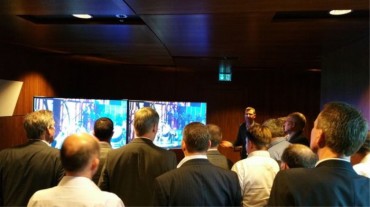
Although banjiha were common in urban areas in the past, they are already in the process of disappearing due to improvements in housing standards and changes in housing culture. (image: CJ ENM)
SEOUL, Feb. 12 (Korea Bizwire) — With director Bong Joon-ho’s masterpiece “Parasite” the toast of the Oscar awards, foreign media are paying keen attention to banjiha – semi-basement apartments – which featured prominently in the film and have been interpreted as a symbol of the gap between rich and poor.
However, banjiha is a type of housing that was more prevalent in the past but is now disappearing with time.
Therefore, some point out that it is not appropriate to expand the analysis to show the gap between rich and poor in South Korea.
According to the census conducted by the Statistics Korea every five year, the proportion of semi-basement households among all households in the country was only 1.9 percent in 2015, down from 3.69 percent in 2005.
The banjiha concept is not even in the building code, but it is a residential form that has spread spontaneously since the 1970s as the population of Seoul and other large cities soared along with industrialization.
Basement floors began to be built in multi-generation homes as the government revised the building code in 1970, obliging the inclusion of underground floors for buildings of a certain size or usage.
Some say that the government mandated the inclusion of basement levels to ensure that there were air defense shelters to safeguard citizens against North Korean air strikes.
Whatever the reason, banjiha spread rapidly as housing became scarce with peopling flocking to Seoul and other big cities due to industrialization.
At present, however, it is practically impossible to build semi-basements in multifamily and other residential buildings.
This is due to the parking lot law that was revised in 2003 and requires all new buildings to provide parking for each household.
Since then, so called ‘piloti’ buildings have grown rapidly to the detriment of semi-basements in residential areas.
Also, over time, old residential areas with banjiha have steadily improved due to redevelopment, and interest in banjiha has decreased as the supply of housing has risen to meet demand.
Although banjiha were common in urban areas in the past, they are already in the process of disappearing due to improvements in housing standards and changes in housing culture.
However, foreign media outlets are focusing on Korea’s semi-underground culture in the wake of Parasite’s great success, highlighting the issue of the gap between rich and poor as a source of evidence.
The BBC and Japan’s Asahi Shimbun recently reported conclusively that banjiha were built according to the government’s requirement that “all newly built low-rise apartment buildings should have basements to serve as bunkers in case of a national emergency”
However, even if the government’s intention to revise the building code in 1970 was reflected in that aspect, it is doubtful that many of those who lived in banjiha ever since thought they lived in air raid shelters.
In “Billy Elliott” (2001), a coming of age story of a British boy growing up in the countryside who dreams of becoming a ballet dancer, there is a scene in which the main character’s father could not find firewood and split the piano from his home to burn in the fire.
The scene was interpreted as an attempt to emphasize the father’s dedication to his son’s dream, although he is poor.
At that time, however, major British media lamented, “Why should Britain be seen as so poor in our movies?”
But, no one would actually think that Britain is actually poor, as the movie is nothing but fiction.
“Semi-basements were common in the 1980s, but due to regulations and redevelopment, they have been disappearing over time,” said Byun Se-il, a researcher at the Korea Research Institute for Human Settlements.
“Although some young people choose semi-basements for temporary housing because of the fact that they are relatively cheap, it is an overreaction to interpret this as evidence that the gap between rich and poor is serious. Banjiha do not reflect the current reality of South Korea’s residential conditions,” he added.
However, the focus on banjiha has had silver lining. Ever since the attention, government and local authorities are trying to improve living conditions for residents of semi-basement apartments.
“The issue of semi-basements is a topic that has emerged as a housing problem for young people in recent years, along with rooftop rooms, goshiwon,” said Lee Han-sol, chairman of the Minsnail Union, a civic group dealing with youth housing issues, adding, “I hope the movie will serve as an opportunity to strengthen the government’s residential welfare policy.”
In fact, some point out that housing support for homes with far worse living environments than semi-basements such as dosshouses and vinyl greenhouses is even more of a necessity.
The number of rough sleepers identified by the Ministry of Land, Infrastructure and Transport through its 2018 survey is estimated at 370,000 nationwide, including 190,000 in the Seoul metropolitan area.
The level is similar to that of semi-basement residents as of 2015.
D. M. Park (dmpark@koreabizwire.com)







